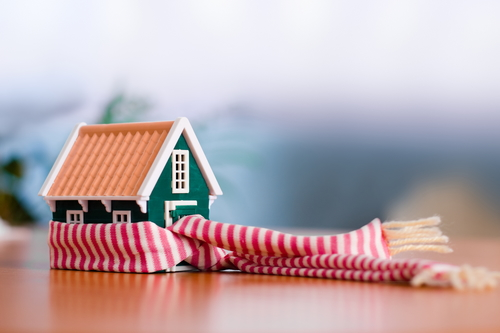Every house has slightly different HVAC needs, and those variations depend primarily on the size of the house. Square footage is a huge factor to consider when buying a furnace or air conditioning system. Different HVAC units range in power. The more powerful units are more appropriate for large houses, while the less powerful ones are intended for smaller dwellings. Matching the size of your home to the appropriate HVAC power rating will ensure superior results, lower costs, and higher efficiency. Of course, figuring out which power ratings are appropriate for which house sizes can be confusing, especially if you’ve never bought HVAC equipment before. For best results, it’s a good idea to consult an HVAC professional for advice on your cooling or heating systems in Santa Rosa. Your HVAC technician will be able to point you in the direction of the right system.
Heating for Small Houses: A Primer

For the sake of conversation, let’s say you are shopping for heating systems in Santa Rosa. You need a furnace—or some other heating option—for a very small or modest-sized home, but you aren’t sure where to start. What do you do?
Two major variables are, in large part, going to determine the answer to this question. The first, of course, is the square footage of your home. How big is your house? The average house size in the United States is about 2,600 square feet, which you can describe fairly as a mid-sized home. Anything under 1,500 square feet, then, absolutely qualifies as small. Square footage is important, as most HVAC professionals will use this figure to determine how many BTUs (British thermal units) of energy are required each hour to heat your home adequately during the coldest times of the year. In other words, make sure you know your home’s square footage before you make a service call to your local HVAC contractor.
The other factor at play is how well insulated your home is. A house with superb insulation and energy efficient windows will hold heat much better than a drafty house with poor insulation. Rather than buying a more robust heating system for a poorly insulated home, though, it is more economically efficient to purchase a smaller system and then do renovation and improvement work to increase your home’s thermal efficiency. Your HVAC professional should be able to give you tips for boosting the thermal performance of your house.
Choosing the Right Heating Systems in Santa Rosa
If your home is reasonably well insulated, you can start figuring out how much heating system power you need right now. A basic, commonly used equation for determining your home’s heating needs is to take your square footage and multiply it by 30. The logic here is that, on average, a home needs 30 BTUs of energy per hour for heating in the winter. If your home is 1,200 square feet, then, you will be looking for a furnace or heating unit with a rated output of around 36,000 BTUs. It’s worth noting, though, that an HVAC professional can always give you a more precise estimate.
Furnaces can be difficult to find in this size. A typical energy rating to find on a “small” furnace is 40,000 BTUs. This output will work for many small homes but be careful: you don’t want to end up with a furnace that produces way more heat than you need. Read our blog post on the matter to learn more about why oversized furnaces or HVAC units are such a problem for homeowners.
If you can’t find a furnace that is small enough to match the heating needs of your home, consider alternative options. Probably the most popular alternative for small houses is the electric mini-split heater. Mini-splits are small, wall-mounted units that can deliver heating in the winter and cooling in the summertime. They are not a super reliable option in extremely cold climates, but for homeowners seeking modest heating solutions in Santa Rosa, they should do the trick. You can install several mini-splits throughout your home, to maintain a comfortable temperature throughout.
Wood burning stoves are another option that is popular in smaller houses. The problems with this option are that 1) building/installing the necessary ventilation systems can be pricey, and 2) you need to leave a fire safety perimeter around the unit. The latter option is especially problematic, as it can eat up precious floor space in a small house. Still, the natural heat that wood stoves provide is comforting and effective.
There are other options too, such as propane heating systems or space heaters. To determine which heating option is right for your small house, call an HVAC professional to consult about heating systems in Santa Rosa. Your technician will be able to assess your home and use details about your square footage, insulation level, and the number of windows to determine how much heating power you need. From there, he or she can advise you on the best strategies for keeping your house warm in the winter months.
